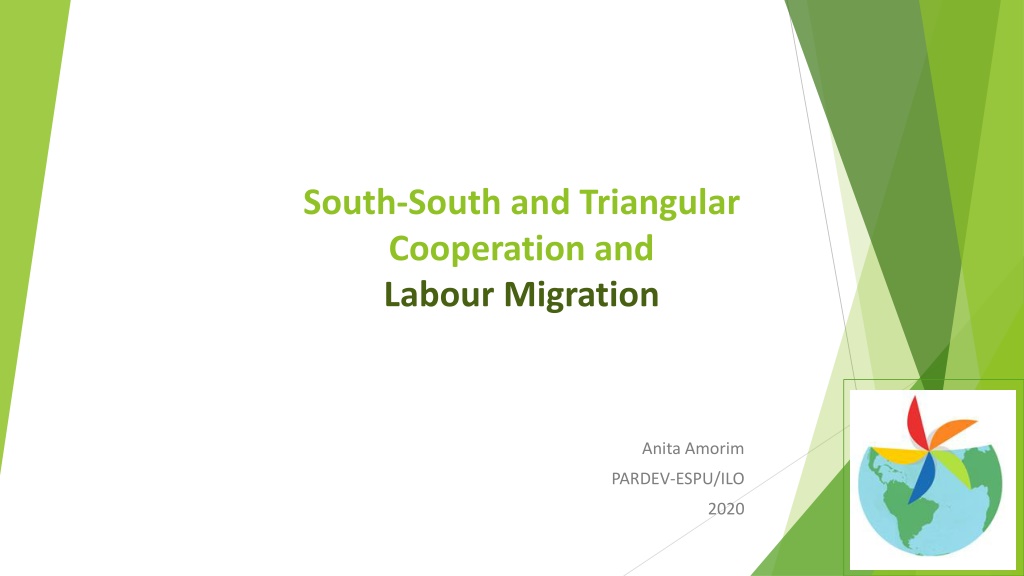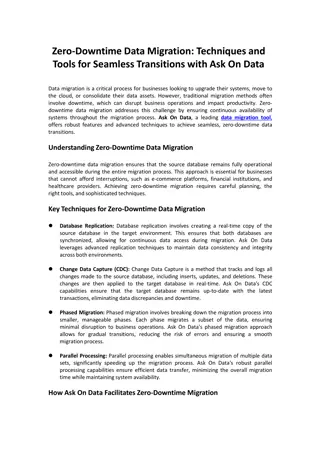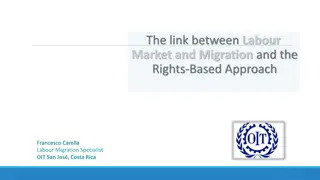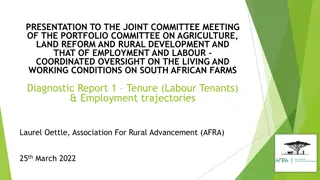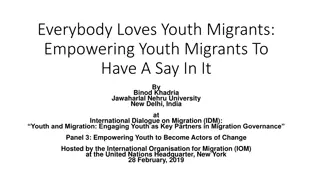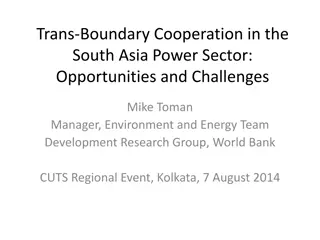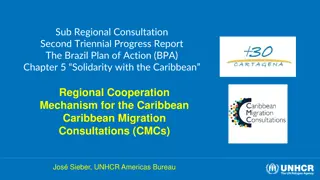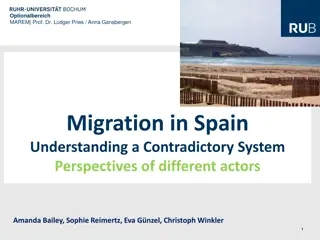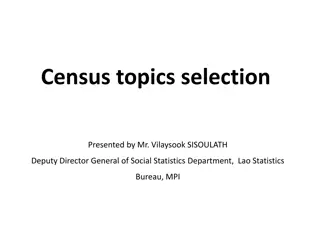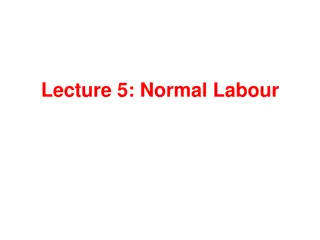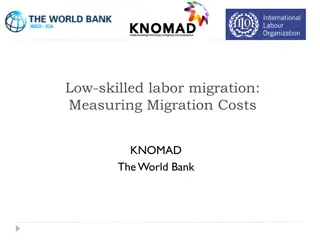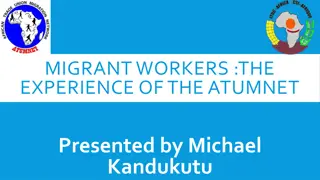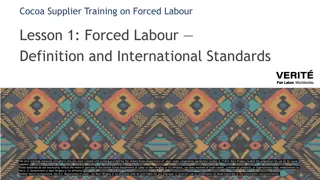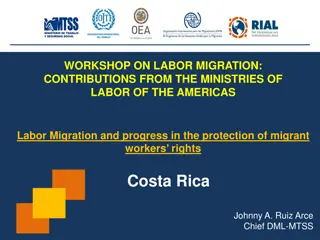South-South Cooperation and Labour Migration
Changes in the global balance of power have highlighted the importance of the Global South in development. South-South Cooperation (SSC) emphasizes mutual benefit and solidarity among countries of the Global South, promoting sustainable development solutions. SSC, including Triangular Cooperation, facilitates sharing best practices and addressing common challenges, with an emphasis on national ownership and non-conditionality. Proximity and shared experiences make SSC an effective approach to tackling development issues.
Download Presentation

Please find below an Image/Link to download the presentation.
The content on the website is provided AS IS for your information and personal use only. It may not be sold, licensed, or shared on other websites without obtaining consent from the author.If you encounter any issues during the download, it is possible that the publisher has removed the file from their server.
You are allowed to download the files provided on this website for personal or commercial use, subject to the condition that they are used lawfully. All files are the property of their respective owners.
The content on the website is provided AS IS for your information and personal use only. It may not be sold, licensed, or shared on other websites without obtaining consent from the author.
E N D
Presentation Transcript
South-South and Triangular Cooperation and Labour Migration Anita Amorim PARDEV-ESPU/ILO 2020
Development Cooperation and the Global South Changes in the geopolitical and economic balance of power have brought out the importance of the Global South in the development process and enabled new actors to shape the development agenda. Innovative responses to global challenges are now coming from emerging powers of the South, who are in turn becoming strategic partners for other developing countries. In the spirit of international solidarity, promoting sustainable and decent work for all is central to the ILO s mandate.
What is SSTC? Solidarity South-South and Triangular Cooperation National ownership (SSTC) is a collaboration between equals Mutual benefit based on principles of horizontality. It Non conditionality promotes mutual exchanges between Complementarity countries of the Global South for Respect to national sovereignty and no interference in domestic issues development solutions and it involves a Demand-driven multiple stakeholder approach. Principles (BAPA+40/ Nairobi 2009):
Why is SSTC important? Positive effects of proximity, be them cultural, economic, political or social, between the countries involved. Similar development levels, challenges and experiences make good practices of one country highly adaptable to another country in the Global South Sharing and adapting evidence-based good practices is a profitable approach do development challenges Common issues often call for joint actions South-South migration (mostly cross-border and interregional) estimated at minimum 50% of overall labour migration
Modalities South-South Cooperation (SSC): Cooperation between two or more countries from the Global South Triangular Cooperation: SSC with the support of a partner from the Global North. Support from the Northern partner can be in the form of a financial contribution or technical expertise. It must be demand-driven, led by developing countries and aligned with their national priorities Must respect the SSTC principles of horizontality
Sub-Modalities Country to Country: between two countries of the Global South Regional/Subregional Cooperation: South-South exchanges and associations in the regional or subregional level City-to-City Cooperation (C2C): SSC between different cities in the Global South Fragile-to-Fragile Cooperation (F2F): SSC between countries in facing fragility. Cooperation between Small Island Developing States (SIDS-to-SIDS)
SSTC in action: mechanisms International workshops/fora Postgrad scholarships Apprenticeships Scholarships Creating and strengthening networks and platforms Exchange of experiences and good practices Establishing alliances and associations Capacity- development Communities of practice Experts/personnel exchange Study tours Training of trainers
Actors involved Under the ILO s tripartite structure, governments, workers and employers organizations are formally part of the implementation process Regional and International Organizations Bilateral agencies Academic Institutions National institutions and networks
SSTC in the ILO In March 2012 the ILO Governing Body endorsed the paper South South and triangular cooperation: The way forward, and became one of the first UN agencies with a South-South cooperation strategy. The strategy was reviewed in March 2018 and complemented with future steps, that include a wider engagement with our social partners, the governments of the Global South, as well as developed countries through triangular cooperation. The ILO has for several decades collaborated closely with regional organizations and initiatives, such as the CPLP, MERCOSUR, ASEAN, ECOWAS and the Regional Initiative for Combatting Child Labour.
The role of the ILO The ILO brings tripartite constituents together and acts as a facilitator to set cooperation strategies The ILO documents and disseminates a wide range of knowledge (compilation of good practices, knowledge exchange platforms and forums) The ILO forges inclusive partnerships and sets strategic alliances with the purpose of transferring expertise The ILO follows-up and reports on major inter-governmental decisions regarding South-South and triangular cooperation
SSTC in the ILO Fighting child labour and supporting City-to-City Cooperation, SSE and LED Fragile-to- Fragile Cooperation Labour Migration youth Social Protection Floors, Public Employment Green Jobs and Sustainable Development Social Dialogue
South-South Meeting Point Online platform of the ILO to share theoretical and practical information on South-South and Triangular and discuss different topics on the world of work with employers and workers representatives, governments, academia, civil society and others from the Global South. Click here to acces: Espa ol | Fran ais | English Online platform of the ILO to share theoretical and practical information on South-South and Triangular and discuss different topics on the world of work with employers and workers representatives, governments, academia, civil society and others from the Global South. Click here to acces: Espa ol | Fran ais | English
SSTC and Labour Migration South-South and Triangular Cooperation is fundamental for developing joint action on labour migration policies SSTC can bring together migrant workers, employers and sending and receiving countries based on principles of horizontality, solidarity and mutual benefit Guaranteeing migrant workers rights and access to decent work, especially (but not only) in relation to growing South-South migration flows
Example: Promoting Development Initiatives for Migrant workers through SSTC SSTC supported greater cooperation between unions and organizations of migrant workers in Senegal and Mauritania, and strengthen their ability to provide specialized support services to its members. Activities included: Creation of two networks of trainers: Interunion and Diaspora network for Migrants and Youth support (Ridam Senegal), and the National Organizations network for Migrants and Youth support (RONDAM Mauritania). Migrants in Mauritania and Senegal were trained on employability; A regional workshop on dissemination of financial education tools, with exchanges between various Senegalese, Mauritanian and Moroccan institutions on financial education programmes, the processes of adaptation and introduction within each context.
Example: SSTC for Fair Recruitment of Guatemalan Migrant Workers in Mexico In 2015, the ILO offered technical support and intermediated SSTC exchanges between Guatemala and Mexico under the framework of Fair Recruitment. Activities included: The creation of intergovernmental working groups Binational workshops The implementation of a joint program for temporary migrant workers Establishment of a binational standard for registration for recruitment agencies Awareness-raising campaigns for providing migrant workers with information on their rights.
Example: ASEAN Forum on Migrant Labour (AFML) The AFML is an annual and institutionalized multi-stakeholder forum in the ASEAN supported by the ILO and IOM The AFML serves as a platform to discuss, share experiences, and build consensus on migrant worker issues committed under the 2007 ASEAN Declaration on the Protection and Promotion of the Rights of Migrant Workers and the 2017 ASEAN Consensus on the Protection and Promotion of the Rights of Migrant Workers. 13th AFML, November 2020:Ten ASEAN MS, social partners and CSOs adopted 12 recommendations on pandemic response and building back better
Example: Labour Mobility in Pacific Island Countries (PICs) Intra-Pacific Labour Mobility: Despite an absence of reliable data, intra-regional migration flows are known to already exist. Fijians have been able to find employment in several PICs and in various occupations and industries. The Skills Movement Scheme (SMS) under the Melanesian Spearhead Group (MSG) was introduced in 2012. There is potential for increasing intra-Pacific labour mobility
Climate Change, Migration and South-South Cooperation: a Small Islands Perspective Small Island Developing States (SIDS) are particularly vulnerable to climate hazards, which are increasingly drivers of internal and international migration and displacement, including between SIDS This creates new challenges for sending and receiving countries, requiring strong partnerships for development cooperation to build sustainable and resilient communities and support those facing forced climate migration. SSTC, and particularly SIDS-to-SIDS cooperation, can be a key mechanism for joint actions and developing new solutions
Example: Caribbean Planning for Adaptation to Global Climate Change Project In 2002, the Caribbean Planning for Adaptation to Global Climate Change Project brought together ten Caribbean countries (SIDS) to outline their climate change vulnerabilities and concerns. A 2002 report on the regional synthesis of the vulnerability and adaptation addressed issues such as increase of tropical storms, droughts, impact on water resources, agriculture and ecosystem, as well as impact on tourism industry, central to their economies
Example: Peer Learning Seminar on a Just Transition and Climate Resilience in Samoa In September 2018, ILO Regional Learning Workshop for Climate Change and Decent Work held in Apia, Suva focused on topics related to Climate Change and Decent Work in the Pacific. Provided tools for disaster preparedness, identifying business opportunities in local public works to prevent disasters, and promoting entrepreneurship on areas related to climate resilience. Good practices and lessons within Samoa and beyond in the Pacific countries were disseminated through peer learning and later show-cased in the Global South-South Development Expo 2018.
